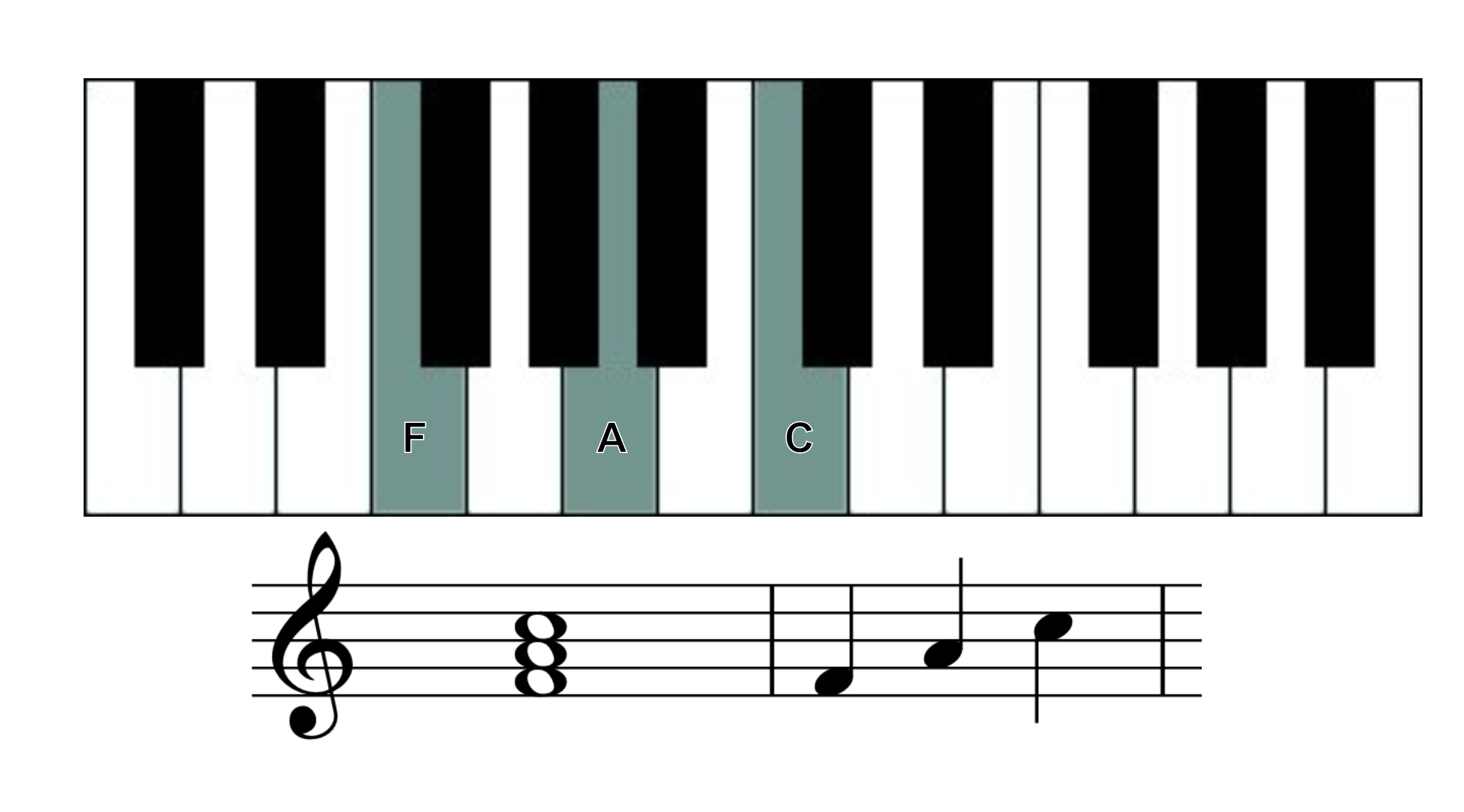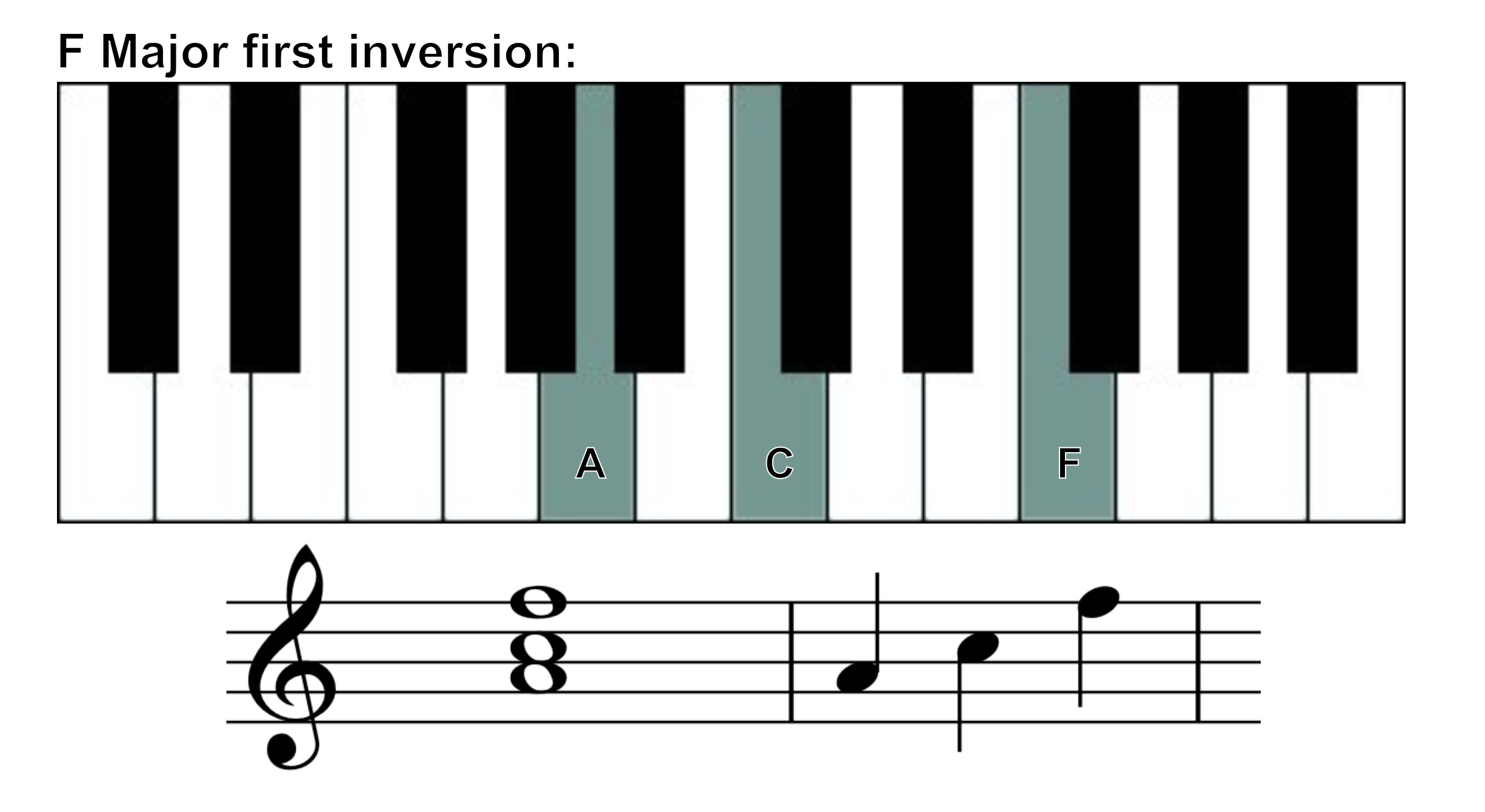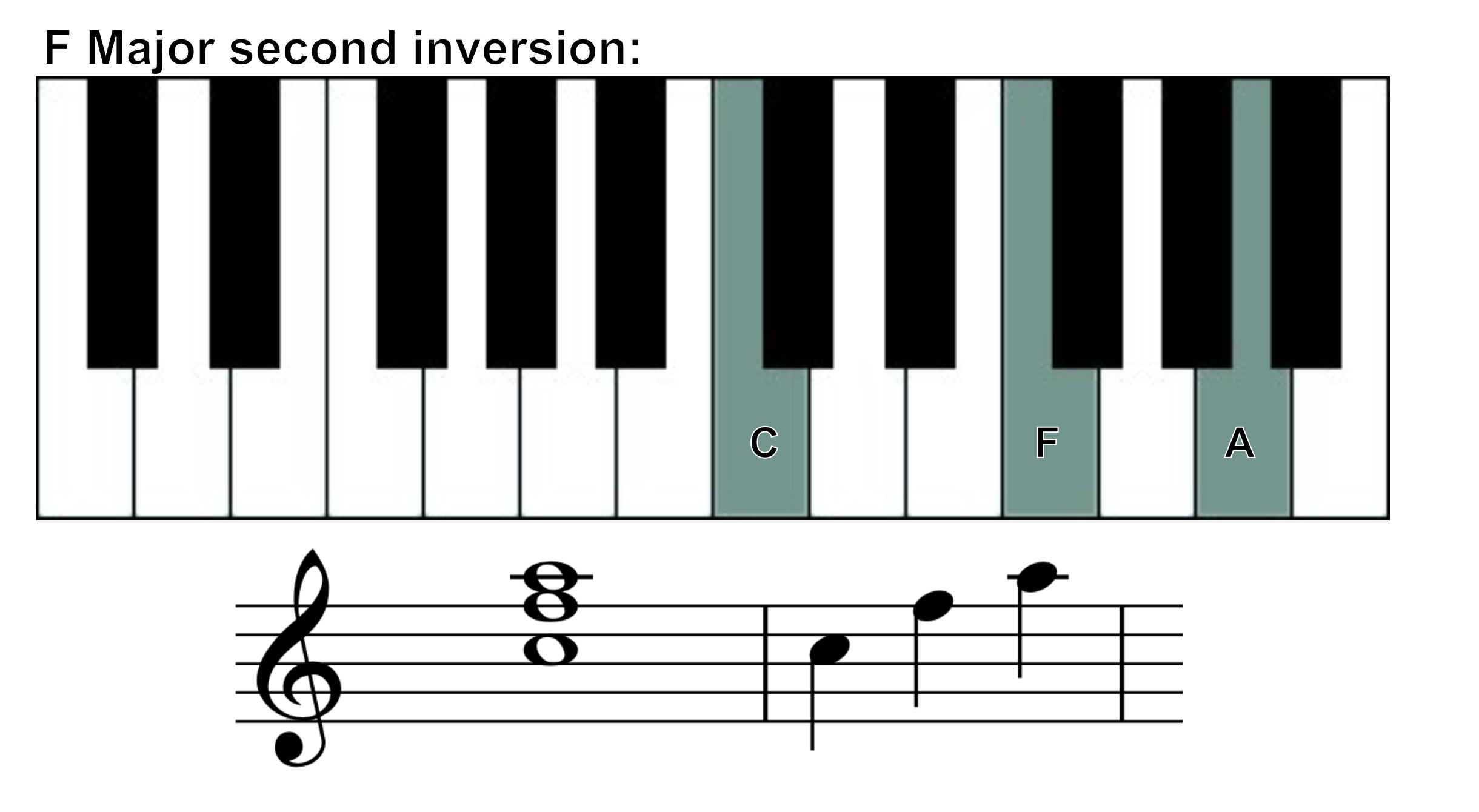To play the F major chord, begin by locating the note F, which is the white key immediately to the left of the three black keys. Once you’ve found it, combine F with A and C to create the F major chord.

F major notes
The F major chord consists of three notes: F, A and C.
These notes are called: the root (F), third (A) and fifth(C). Together, they create a bright and full sound.
To play this chord in its root position (basic form) with your right hand, use these fingers:
- C – Fifth finger (5)
- A – Third finger (3)
- F – Thumb (1)
For the left hand, use the following fingers:
- C – Thumb (1)
- A – Third finger (3)
- F – Fifth finger (5)
The inversions of an F major chord
The inversions of the F major piano chord are formed by rearranging the order in which the notes are played. Chord inversions allow you to play the same chord with a different sound and control how you emphasize each note of the chord.
The F major chord has two inversions:
- F major first inversion places F at the top of the chord, leaving A as the lowest note.
- F major second inversion places both F and A at the top, leaving C as the lowest note.
Let’s break down these inversions further and discover how to play them on piano.
How to play F major first inversion?
To play the first inversion of the F major piano chord, start with A as the lowest note. Next, play C above it and finally add F as the highest note. This gives the chord a fresh sound that’s great for smooth transitions between chords.

For the right hand, use these fingers:
- F – Fifth finger (5)
- C – Second finger (2)
- A – Thumb (1)
For the left hand, use these fingers:
- F – Thumb (1)
- C – Third finger (3)
- A – Fifth finger (5)
How to play F major second inversion?
To play the second inversion of the F major piano chord, start with C as the lowest note. Then play F above it and finally add A as the highest note. This inversion gives the chord a different sound and is often used to make chord resolutions more interesting.

For the right hand, use these fingers:
- A – Fifth finger (5)
- F – Middle finger (3)
- C – Thumb (1)
For the left hand, use these fingers:
- A – Thumb (1)
- F – Second finger (2)
- C – Fifth finger (5)
F major chord progression
The F major chord progression is widely used in various genres, from rock and pop to jazz and classical music. An F major chord progression often includes chords like F, C, Bb and Dm. Here are some popular F major chord progressions:
- F – Bb – Dm – C
- F – Dm – Bb – C
- F – Bb – C – Bb
- F – Bb – F – C
These progressions highlight the versatility of the F major key, offering a range of moods from uplifting to warm and emotional. They are a great way to put your knowledge of piano chords to the test. To understand these chord symbols and how to play them, check out Skoove’s tailor-made beginner chord progression courses.
Piano chords generator
💡 If you are reading this from a mobile device, rotate it to display the tool in full width.
1. Click on “Chords”
2. Choose the “Root” of the chord
3. Choose the “Chord qualities” (major, minor, etc.)
4. Click “Display”
Popular songs to play with the F major piano chord
Yellow Submarine and Yesterday
These two lessons teach you how to play the lead melody in the F major scale, while using your left hand to play a bass line that, when combined with the melody, suggests the different harmonies we see in the progressions from earlier. It’s a great and simple way to start learning new songs.
Hey Jude
Different from the previous lessons, you get to play the full harmonies with your left hand, allowing you to hear each chord more clearly while helping you practice voice-leading (how one chord transitions into the next) on the piano.
Let it be
This song, even though it is in the C major key, does include F major chords throughout. It is perhaps the most advanced song of the course, since you’ll learn to play harmony and melody in both hands. It’s a great way to test what you learned in this article!
Fly me to the moon – Frank Sinatra
Author of this blog post:
Susana Pérez Posada

With over seven years of piano education and a deep passion for music therapy, Susana brings a unique blend of expertise to Skoove. A graduate in Music Therapy from SRH Hochschule Heidelberg and an experienced classical pianist from Universidad EAFIT, she infuses her teaching with a holistic approach that transcends traditional piano lessons. Susana’s writings for Skoove combine her rich musical knowledge with engaging storytelling, enriching the learning experience for pianists of all levels. Away from the piano, she loves exploring new places and immersing herself in a good book, believing these diverse experiences enhance her creative teaching style.
Published by Lydia Ogn from the Skoove team














